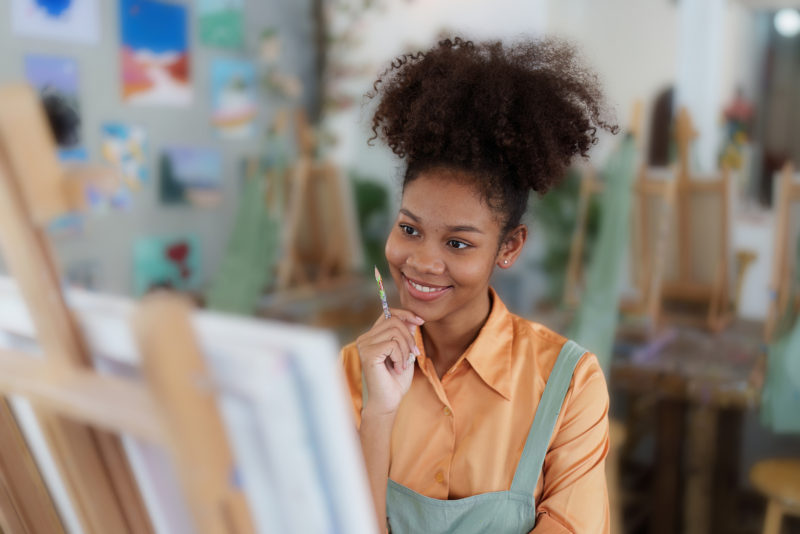The art world is full of hidden figures ‒ talented individuals who have shaped and enriched our creative reality. Their stories are often lost in the mainstream narrative, but they deserve our attention and celebration.
Just like when you’re looking for a reliable essay writing service and stumble upon Essay Pro reviews that shed light on a hidden gem, we’re about to uncover some remarkable artists who have made significant contributions to the world of art. So, get ready to dive into the vibrant tapestry of diversity in the arts.
Artists from Underrepresented Communities
The history of art is often told through a narrow lens, focusing primarily on Western European artists. However, when we dig deeper, we discover a treasure trove of creativity from artists from underrepresented communities.
Take Augusta Savage, for example, an African American sculptor whose work celebrated Black identity and challenged racial stereotypes. Despite facing discrimination and limited opportunities, Savage persevered and led the Harlem Renaissance. Her story reminds us that talent knows no boundaries and that artists from all walks of life deserve recognition and support.
Similarly, mainstream art circles often override the vibrant world of Indigenous art. Artists like Norval Morrisseau, a member of the Bingwi Neyaashi Anishinaabek First Nation, have used their art to express their cultural heritage and spiritual beliefs. Morrisseau’s distinctive style, with bold lines and vibrant colors, earned him international acclaim and helped bring Indigenous art to a wider audience.
Women Artists Breaking Barriers
Throughout history, women artists have faced numerous challenges and obstacles, often being marginalized and dismissed by the art establishment. Yet, they have persevered, creating powerful works that challenge gender stereotypes and social norms.
Consider Frida Kahlo, an iconic Mexican painter known for her vibrant self-portraits and unflinching exploration of female identity.
By appreciating and bringing to light the achievements of women artists, we break down barriers and create a more fair and inclusive art world.
Beyond Kahlo, there are countless other women artists who contributed to the art world, often against all odds. Artemisia Gentileschi, a Baroque painter from Italy, was renowned for her dramatic depictions of strong female figures from mythology and the Bible. Her work challenged the male-dominated art scene of her time and influenced future women artists.
Diverse Voices, Richer Narratives
When we see ourselves reflected in art, it validates our experiences and makes us feel seen and heard. That’s why representation matters, especially in the arts. When artists from diverse backgrounds share their stories and perspectives, they enrich our collective understanding of the world.
For instance, the growing popularity of Afrofuturism, a genre that blends science fiction with African diaspora culture, has provided a platform for Black artists to express their visions and challenge traditional narratives.
Representation also plays a crucial role in combating stereotypes and promoting understanding. When we see diverse characters and stories in art, it challenges our preconceived notions and broadens our perspectives.
This is especially useful for young people, who are still forming their understanding of the world. Exposure to diverse art forms can help them become empathetic, develop critical thinking skills, and form a more inclusive worldview.

Building Bridges Through Art
Art brings people together. When artists from diverse backgrounds collaborate, they open up opportunities for dialogue and cultivate mutual respect.
Collaborative art projects can take many forms, from murals that celebrate community diversity to theatrical productions that explore shared human experiences. By working together, artists can break down barriers, foster connections, and create a more harmonious society.
One inspiring example of collaborative art is the Inside Out Project, a global art initiative that uses large-scale portraits to transform public spaces and spark conversations about social issues. By bringing together people from different backgrounds to create and display these portraits, the project fosters a sense of community and shared purpose.
The Role of Education
To ensure that the arts continue to thrive as a diverse and inclusive space, we must invest in arts education. This means providing young people from all backgrounds with access to quality arts education programs that nurture their creativity and expose them to a wide range of artistic traditions.
It also means supporting emerging artists from underrepresented communities by providing them with mentorship, resources, and opportunities to showcase their work. By fostering a new generation of diverse artists, we ensure that the arts remain a vibrant and dynamic reflection of our ever-evolving world.
The Bottom Line
By celebrating hidden figures, challenging stereotypes, and amplifying diverse voices, we create a richer and more inclusive artistic landscape. Just as a comprehensive user review can help find the best research paper writers for the coursework writing needs, exploring the stories of underrepresented artists can open up new avenues for inspiration and understanding.
So, let’s continue to shine a light on these hidden figures and celebrate the incredible diversity that makes the world of art so captivating and meaningful.
